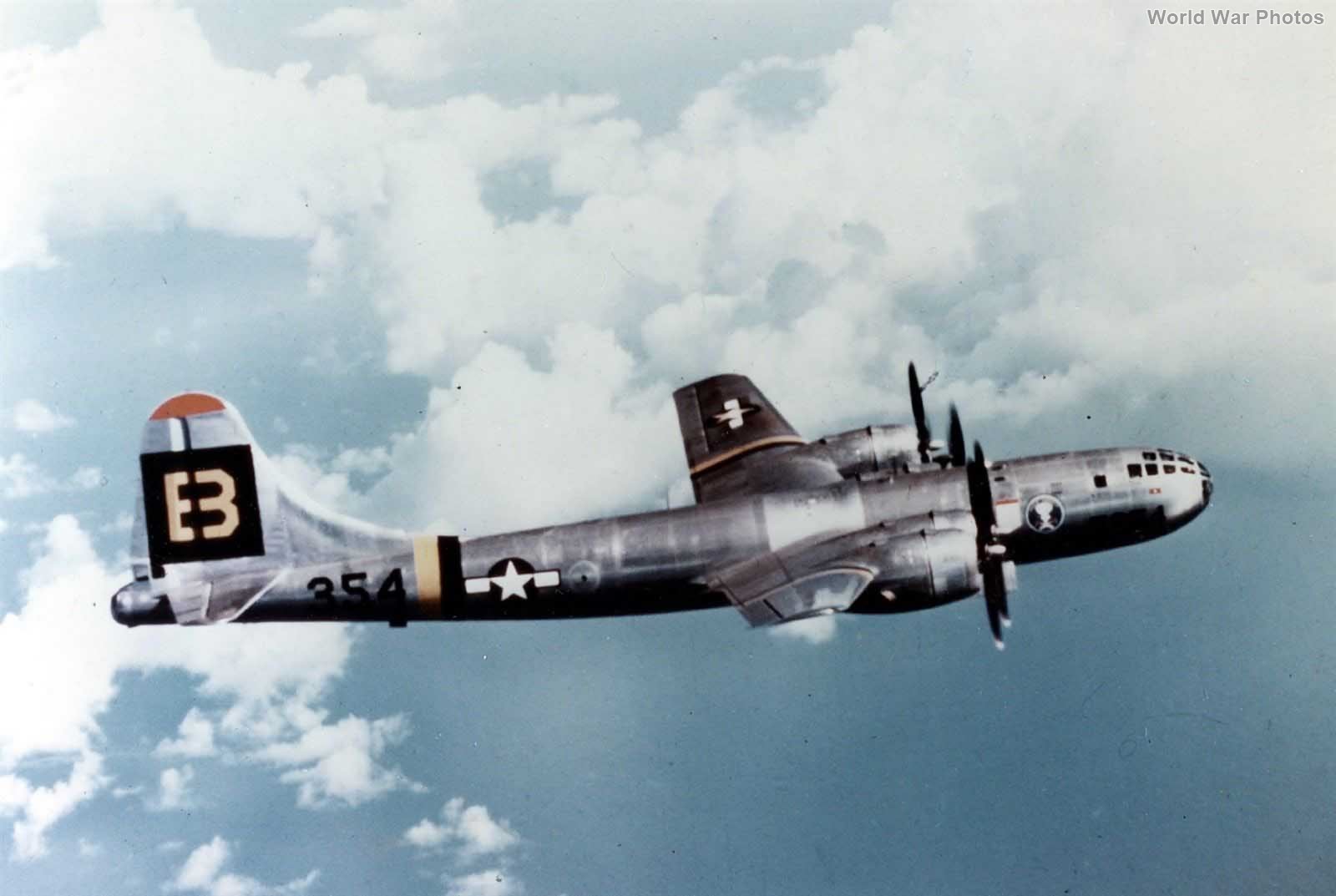
1 July 1946: Operation Crossroads, Test Able. At 9:00:34 a.m., local time, a Mk 3A atomic bomb, code named “Gilda,” dropped from a Martin-built B-29 Superfortress, Dave’s Dream, flying at 28,000 feet (8,534 meters),¹ detonated over an array of warships moored at the eastern end of the the Bikini Atoll lagoon in the Marshall Islands. This was the fourth explosion of an atomic weapon.
A major purpose of Test Able was to evaluate the effects of an atomic bomb used against a fleet of warships. 93 ships ² had been moored in the lagoon as test subjects. The bomber’s target was the U.S. Navy battleship, USS Nevada (BB-36). Nevada had been painted orange to aid the bombardier in identifying it. The bomb fell 980 feet (299 meters) short and 1,870 feet (570 meters) to the left of the target. It detonated at an altitude of 580 feet (177 meters). It is suspected that a damaged fin may have caused the bomb to miss its target, though an investigation of the bomber’s crew was conducted.
Gilda had been loaded aboard Dave’s Dream at Kwajalein, at about midnight. The bomber took off from the airfield there at 5:55 a.m., 1 July, and headed toward Bikini.
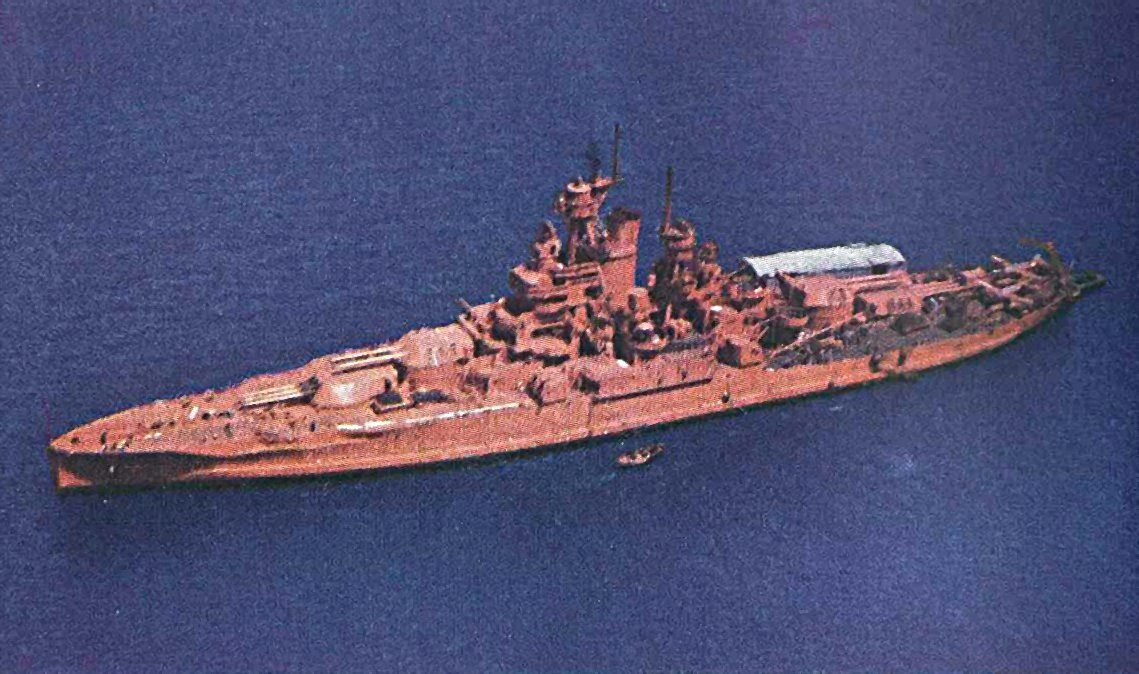
Gilda was a 10,213-pound (4,632 kilogram) “Fat Man”-type atomic bomb, designated Mk 3A. The egg-shaped weapon contained a 6.2 kilogram (14 pound) sphere of Plutonium Pu 239, surrounded by a high-explosive charge. The explosives were formed in “lenses” that would direct the force inward in a very precise manner. The purpose was to compress—or implode— the Plutonium to a much greater density, resulting in a “critical mass.” When this critical mass is attained, a fission chain reaction results, releasing a tremendous amount of energy. The Mk 3A was the same type weapon used against Nagasaki, Japan, 9 August 1945.
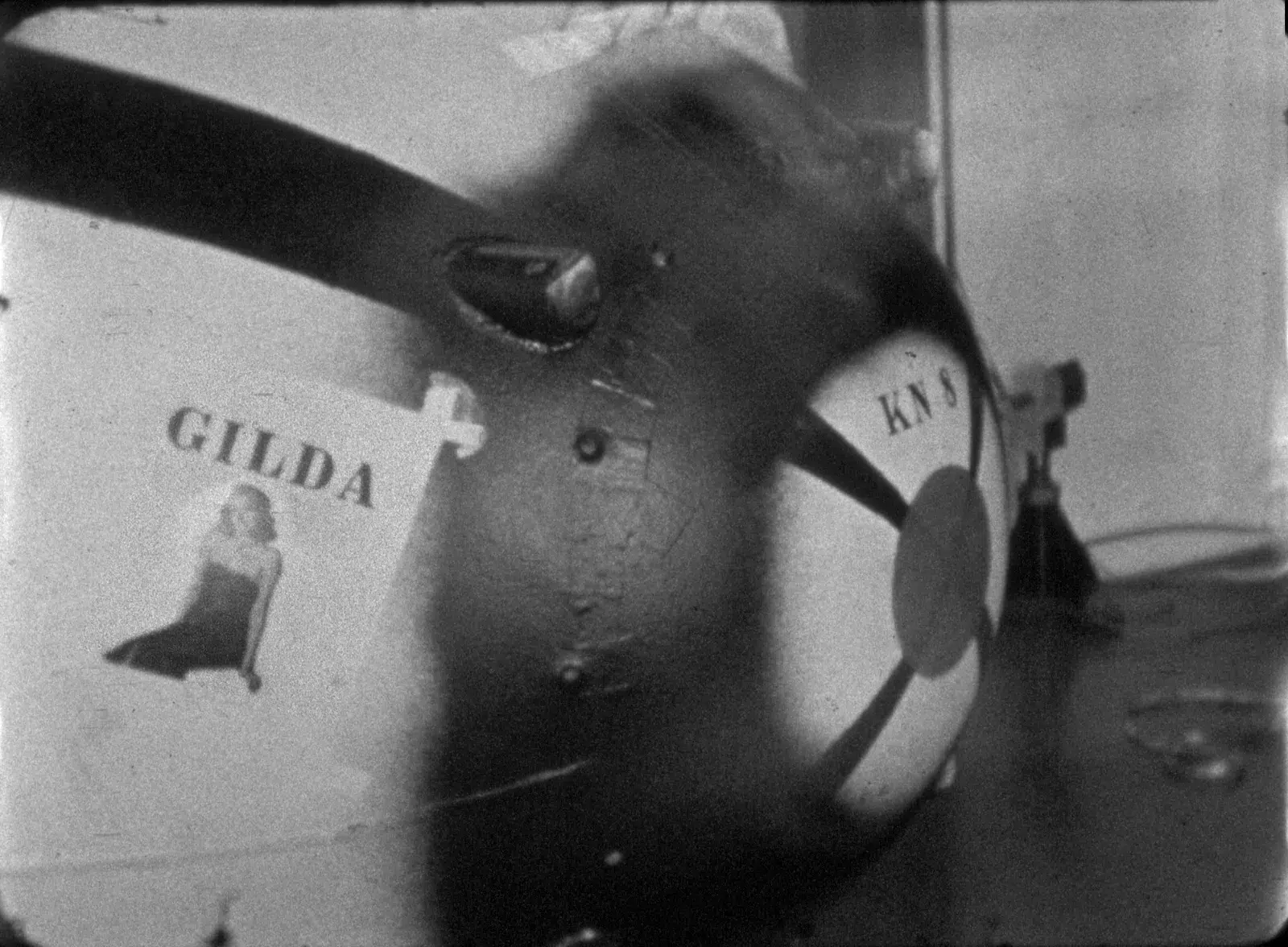
The yield of the Test Able detonation was 23 kilotons. Five ships were sunk, and fourteen, including Nevada, suffered serious damage. Analysis of test results estimated that if the battleship had been manned, its entire crew would have suffered a lethal dose of radiation.
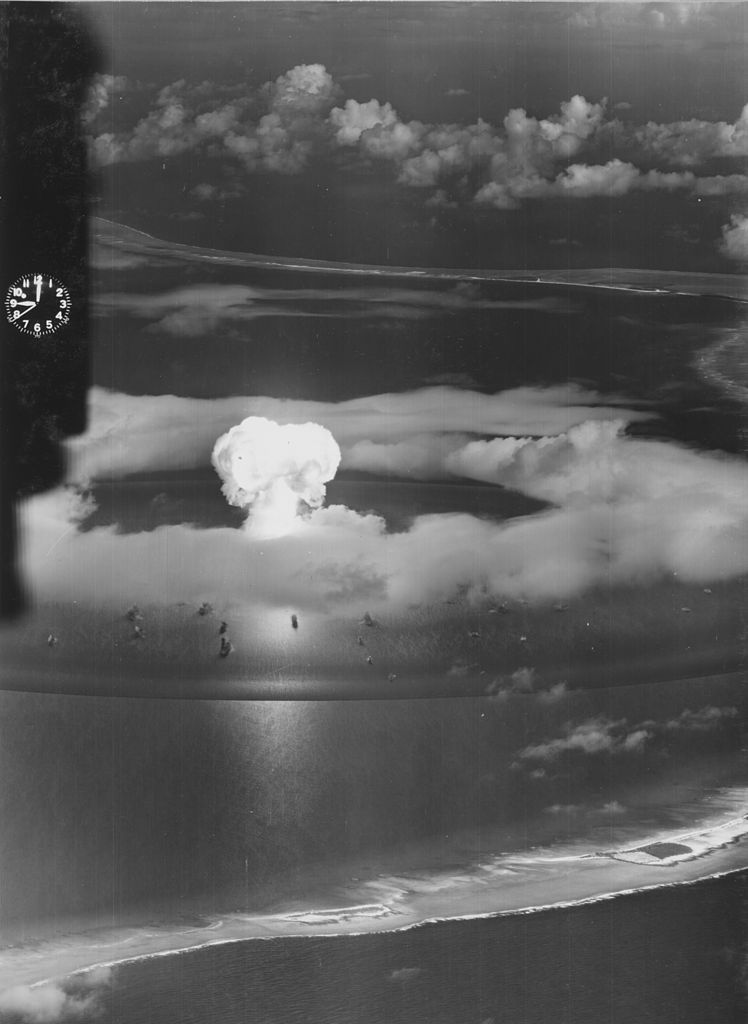
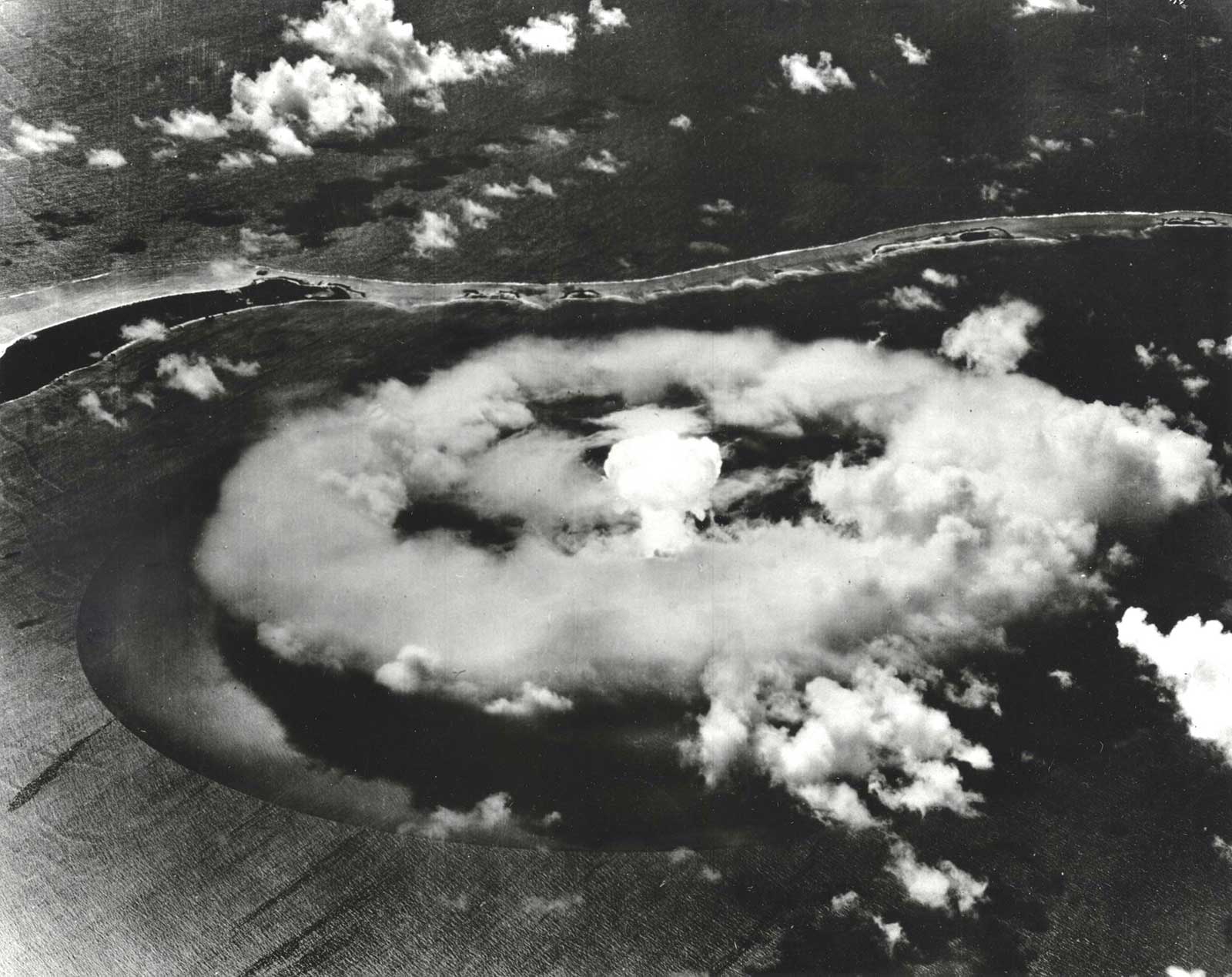
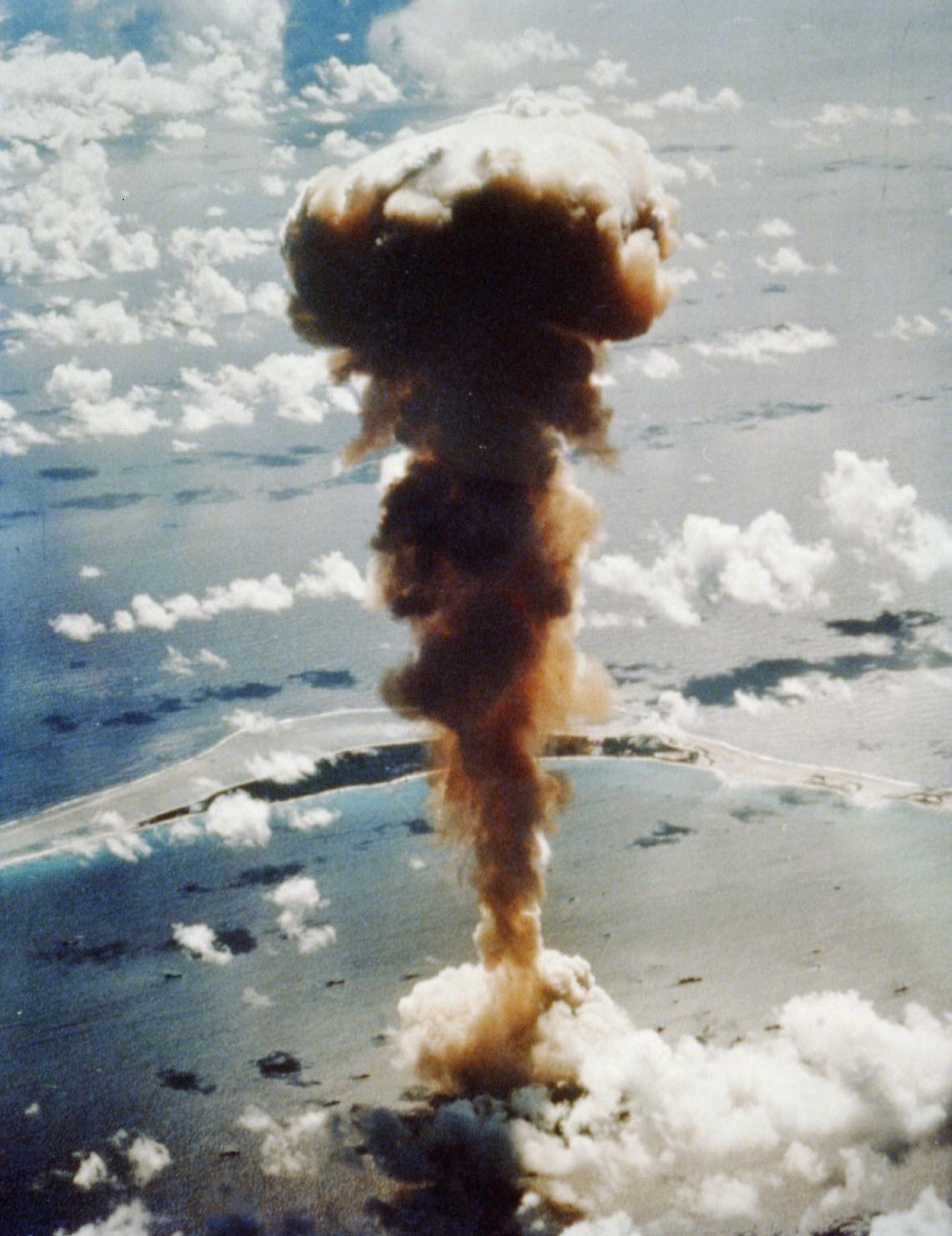
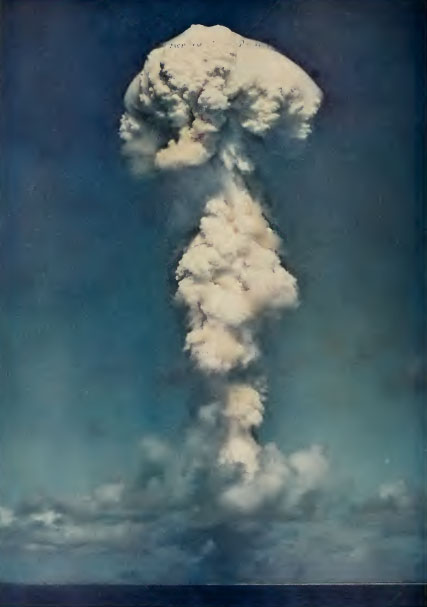
Dave’s Dream was a Martin-Omaha-built B-29-40-MO Superfortress, serial number 44-27354. It was a specially modified “Silverplate” B-29, given the designation Victor 90. It had been the camera ship on the mission against Nagasaki, Japan, 9 August 1945. Following that mission, its wartime crew had named it Big Stink.
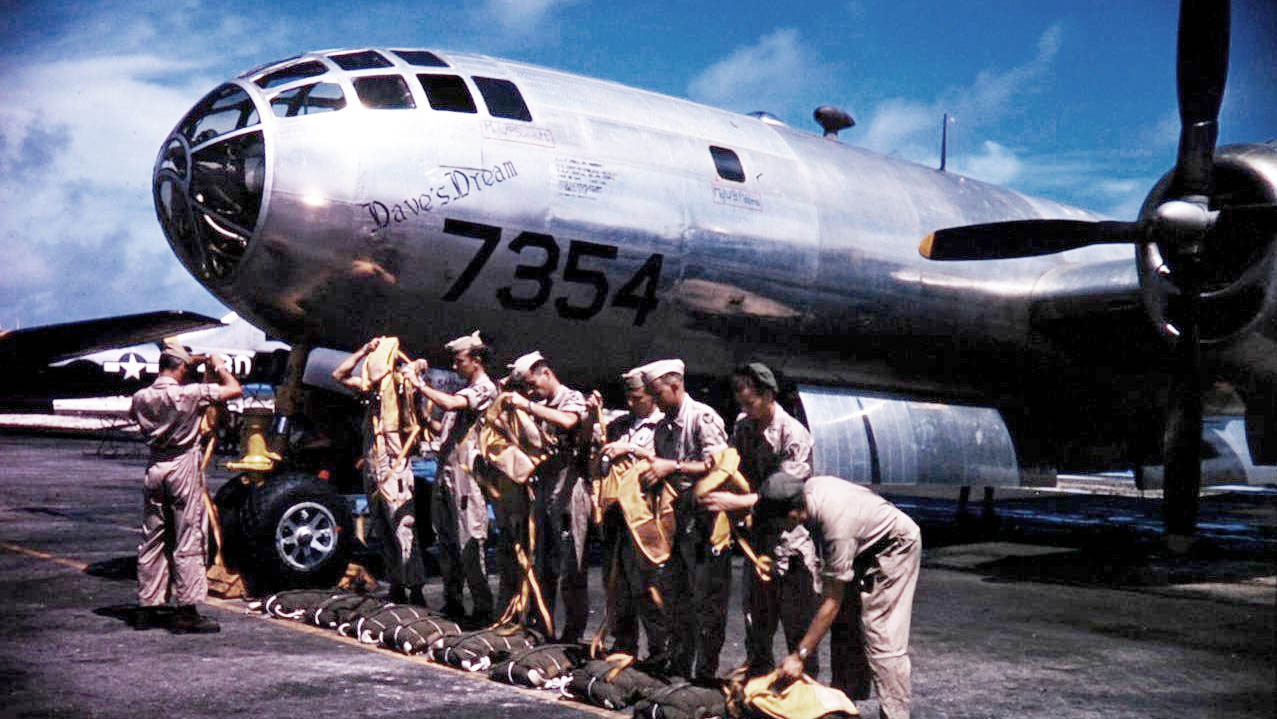
For Test Able, Dave’s Dream was flown by Major Woodrow Paul Swancutt, U.S. Army Air Forces. The co-pilot was Captain William C. Harrison, Jr. The bombardier was Major Harold H. Wood, and radar operator, Captain Paul Chenchar, Jr. 1st Lieutenant Robert M. Glenn served as flight engineer. The radio operator was Technical Sergeant Jack Cothran, and Corporals Herbert Lyons and Roland M. Medlin were scanners.
The Silverplate B-29s differed from the standard production bombers in many ways. They were approximately 6,000 pounds (2,722 kilograms) lighter. The bomber carried no armor. Additional fuel tanks were installed in the rear bomb bay. The bomb bay doors were operated by quick-acting pneumatic systems. The bomb release mechanism in the forward bomb bay was replaced by a single-point release as was used in special British Lancaster bombers. A weaponeer’s control station was added to the cockpit to monitor the special bomb systems.
The Silverplate B-29s were powered by four air-cooled, supercharged, 3,347.662-cubic-inch-displacement (54.858 liter) Wright Aeronautical Division R-3350-41 (Cyclone 18 787C18BA3) two-row 18-cylinder radial engines with direct fuel injection. The R-3350-41 had a compression ratio of 6.85:1 and required 100/130 aviation gasoline. It was rated at 2,000 horsepower at 2,400 r.p.m. at Sea Level, and 2,200 horsepower at 2,800 r.p.m, for take-off. The engines drove four-bladed Curtiss Electric reversible-pitch propellers with a diameter of 16 feet, 8 inches (5.080 meters), through a 0.35:1 gear reduction. The R-3350-41 was 6 feet, 2.26 inches (1.937 meters) long, 4 feet, 7.78 inches (1.417 meters) in diameter and weighed 2,725 pounds (1,236 kilograms).
With the exception of the tail gunner’s position, all defensive armament—four powered remotely operated gun turrets with ten .50-caliber machine guns—were deleted. Their remote sighting positions were also removed. The Silverplate B-29s carried 1,000 rounds of ammunition for each of the two remaining Browning AN-M2 .50-caliber machine guns in the tail.
With these changes, the Silverplate B-29s could fly higher and faster than a standard B-29, and the fuel-injected R-3350-41 engines were more reliable. They had a cruising speed of 220 miles per hour (354 kilometers per hour) and a maximum speed of 365 miles per hour (587 kilometers per hour). The service ceiling was 31,850 feet (9,708 meters) and its combat radius was 2,900 miles (4,667 kilometers).
¹ OPERATION CROSSROADS 1946, DNA 6032F, Final Report, Defense Nuclear Agency, Washington, D.C., Page 87
² OPERATION CROSSROADS 1946, DNA 6032F, Final Report, Defense Nuclear Agency, Washington, D.C.Page 84
Full Disclosure: TDiA’s father, Ensign Bart R. Swopes, SC, USN, was present at Bikini Atoll during Operation Crossroads, aboard the aircraft carrier USS Shangri-la (CV-38).
© 2023, Bryan R. Swopes